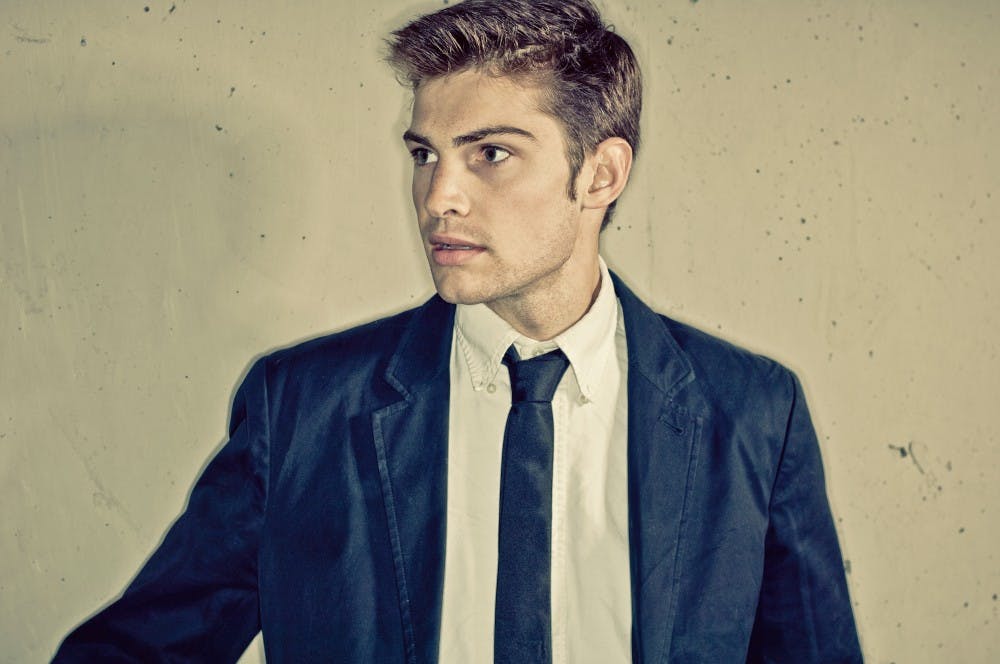Name and Year: Evan Robinson, 2014 Hometown: Los Angeles, CA Major: Economics and Psychology Medium of Choice: Photography Website: evanrobinsonphotography.com
[photospace]
Street: How did you get started, in general and professionally? Evan Robinson: Sophomore year of high school I walked out of a basketball game with a broken finger that pointed sideways. I got surgery so that I could still play guitar, a long time passion of mine, but that meant wearing a cast for 8 weeks. A photo enthusiast friend lent me a camera after the surgery, and I decided to learn how to use it. I was lucky because the high school I attended encouraged student participation in all facets of school life. I began taking photos for the school newspaper and yearbook, which gave me lots of shooting experience in a low stress environment. I approached every assignment for our newspaper as if it were a magazine cover. If I got lucky and something turned out, that was great, but if an idea failed miserably, it wasn't a big loss.
Street: How do you conduct a photo shoot? Do you have specific poses in mind for your subjects beforehand? ER: I walk into shoots with two big goals: to take a photo above my client's expectations for the assignment, and to have the subject say at the end of the hour, without coaxing, that they actually enjoyed being photographed. I try to keep the shoot fun, whether that means telling a ridiculous joke or bringing speakers and listening to the subject’s favorite music. When time with subjects is limited, though, preparation is everything. For instance, I knew I'd only have five to 10 seconds with Lupe Fiasco before Fling last year, so I brainstormed, lit the image with a stand in, and showed Lupe exactly where I wanted him for all 13 seconds I had him in front of my camera.
Street: How long is the editing process and what program do you use? ER: I use three programs to edit all of my images — Photo Mechanic to sort photos, Adobe Lightroom for basic corrective editing (exposure and color) and Photoshop CS5 for retouching. It's the fastest workflow I've found, but editing still always four or five times longer than shooting does.
Street: What has been the most successful mode of advertising for your freelance career? ER: Word of mouth, without a question. There are so many photographers in LA and Philly, that I know I'll never be able to out–advertise them. Instead, I always keep my camera with me, so that everybody I meet knows I'm a photographer and (hopefully) passes on the word.
Street: How do you know Dr. Drew? (!!!) — it had to be done. ER: We met in rehab. Sorry, I couldn't resist. Actually, Dr. Drew's kids went to the same high school as I did. I took their senior portraits, and afterwards Dr. Drew told me he needed new headshots. The shoot was a blast, because he needed almost no direction. The shoot was collaboration between my assistant, his stylist, and the two of us — everybody shared ideas and helped out.
Street: On your website, your portfolio titled Personal Work includes mostly black and white photos, what attracts you to this color scheme (or lack thereof)? ER: Almost everything in my personal work portfolio was taken on a 1950s Leica M2. It's a 100% mechanical camera that forces me to slow down and keep me in touch with the fact that, even though I am interested in photography as a career, the interest stems from my love of the medium and not from my belief that it's a particularly efficient way of making money (it's not).
Street: Do you have any favorite artists? Role models? ER: I've always loved the work of Richard Avedon, and I believe that Platon has done an admirable job of picking up where Avedon left off, developing a style that has gotten him more Time magazine covers than I can count. I'll always look up to Annie Leibovitz as well, because I don't think there has ever been a portrait photographer whose name is so present in the public conscious.
Street: What do you see for yourself in the future? ER: Even though I'm always busy with schoolwork, I try to take photos every day of the week. I love marketing and advertising, both from the creative and business sides. My biggest problem right now is that there are too many things I am excited to wake up and do every morning.

